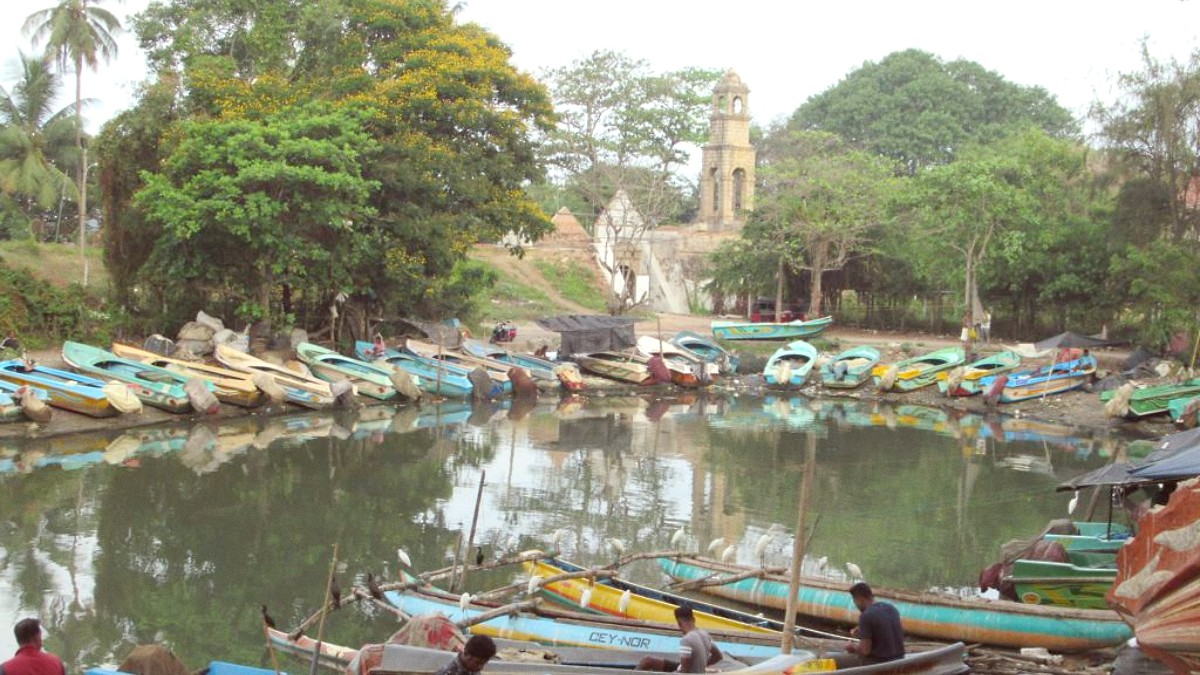
West Coast, Sri Lanka
Negombo provides a fascinating, raw glimpse into the city's main industry. Witness the daily catch, often brought in by traditional outrigger canoes (oruvas), being sorted, sold, and processed. The energy is palpable, a true sensory experience of local life.
Beyond the bustling market, the city's strong colonial past and deep religious roots shape its character, offering visitors a range of historical and cultural sites.
Check local tour operators for various options and availability.
The most prominent natural attraction, offering a long, sandy stretch ideal for walks, sunbathing, and daily life observation.
Large coastal wetland south of Negombo. Recognized for rich biodiversity, especially abundant birdlife. Boat tours popular to explore this natural sanctuary.
Negombo is famous for its spectacular sunsets over the Indian Ocean. A breathtaking natural spectacle.
Negombo Lagoon is excellent for birdwatching. Spot kingfishers, eagles, herons, cormorants. Muthurajawela Marsh has dedicated boat safaris for birds, crocodiles, monitor lizards.
Limited formal parks, but the beach and lagoon areas function as open spaces for relaxation.
Negombo lacks major traditional museums. Cultural insights mainly from active religious sites and historical landmarks. Formal art galleries are limited, but larger hotels and local shops display and sell local art and crafts.
Around the Negombo Lagoon, you can find small-scale prawn farming operations.
Wander through smaller fishing villages along the coast, just north or south of the main tourist beach. Observe traditional fishing methods and interact with local fishermen.
This is a less touristy section of the Dutch Canal, located further north. It offers quieter boat rides and a more serene environment than the central parts of the canal, ideal for peaceful exploration.
Capturing these iconic wooden boats with their distinctive sails, especially at sunrise or sunset on the beach, yields stunning photographs.
Near the fish market, you can often see large areas where fish are laid out to dry in the sun. This presents an unique and authentic photo opportunity of a traditional industry.
The Dutch Canal offers numerous picturesque scenes of boats, local houses, and daily activities along its banks, providing a different kind of photographic subject.
Negombo lacks large, traditional museums. Cultural insights mainly from active religious sites and historical landmarks.
The area around the Dutch Fort and parts of the old town retain remnants of colonial-era architecture. Numerous churches also exemplify religious architecture.
Inquire with guesthouse owners or local friends about local sports matches or community events. Attendance offers genuine cultural immersion often missed by tourists.
Here are some specific locations to explore during your visit.
Negombo does not feature prominent unique geological formations. Its landscape mainly features flat coastal plains, beaches, and wetland areas.
Formal camping sites or outdoor accommodation are not common within Negombo itself, due to its urban and coastal nature. Opportunities for camping exist further inland.
Negombo's identity is deeply intertwined with its religious landmarks and colonial heritage.
The city's past resonates through its infrastructure and architectural remnants.
Negombo's natural beauty shines through its coastal and wetland environments.
The city's waterways are both scenic and historically important.
Here are some tips to enhance your exploration of Negombo's attractions.
Arrive early morning for peak activity and soft light. Always request permission before photographing individuals, notably close-ups.
Visit during non-service hours to avoid disturbance. Natural light inside often best highlights painted ceilings. Dress modestly (shoulders and knees covered).
Sunset boat trips offer excellent photographic opportunities, with changing light creating dramatic skies and reflections on water. Ideal for birdlife capture.
Hire a local guide for your visit to the Fish Market. They can explain fish types, the selling process, and assist with respectful interactions with vendors.
Find Local Guides on GetYourGuideTo find quieter spots on Negombo Beach, walk further north or south from the main tourist strip (Lewis Place/Porutota Road). Explore lesser-known parts of the Dutch Canal.
Outside the peak early morning hours, the Fish Market is less crowded but also less active. For a quieter experience, visit mid-morning.
Explore the lesser-known parts of the Dutch Canal by boat or on foot. These areas offer quieter views and a more intimate connection with local life away from the main tourist paths.
Always ask for permission before photographing individuals, especially close-ups, to show respect for local customs and privacy.
Negombo's main attractions offer glimpses into its heritage and daily life.
Experience Negombo's coastal beauty and rich biodiversity.
Negombo does not feature prominent unique geological formations. Its landscape mainly features flat coastal plains, beaches, and wetland areas.
Formal camping sites or outdoor accommodation are not common within Negombo itself, due to its urban and coastal nature. Opportunities for camping exist further inland in Sri Lanka.
Explore unique elements of Negombo's character beyond the main attractions.
Negombo's identity is deeply intertwined with its religious landmarks and colonial heritage.
The city's past resonates through its infrastructure and architectural remnants.
Negombo's natural beauty shines through its coastal and wetland environments.
The city's landscape mainly features flat coastal plains, beaches, and wetland areas.
The city's waterways are both scenic and historically important.
These waterways contribute to the city's charm and are integral to its identity.
Gain insight into local life through traditional industries.
These experiences offer a connection with daily local life away from tourist crowds.
Negombo does not host large, traditional museums with extensive collections like those found in Colombo or Kandy.
Formal art galleries are limited, but larger hotels and local shops display and sell local art and crafts.
Some larger hotels may occasionally host traditional Sri Lankan cultural performances, like Kandyan dance, for their guests.